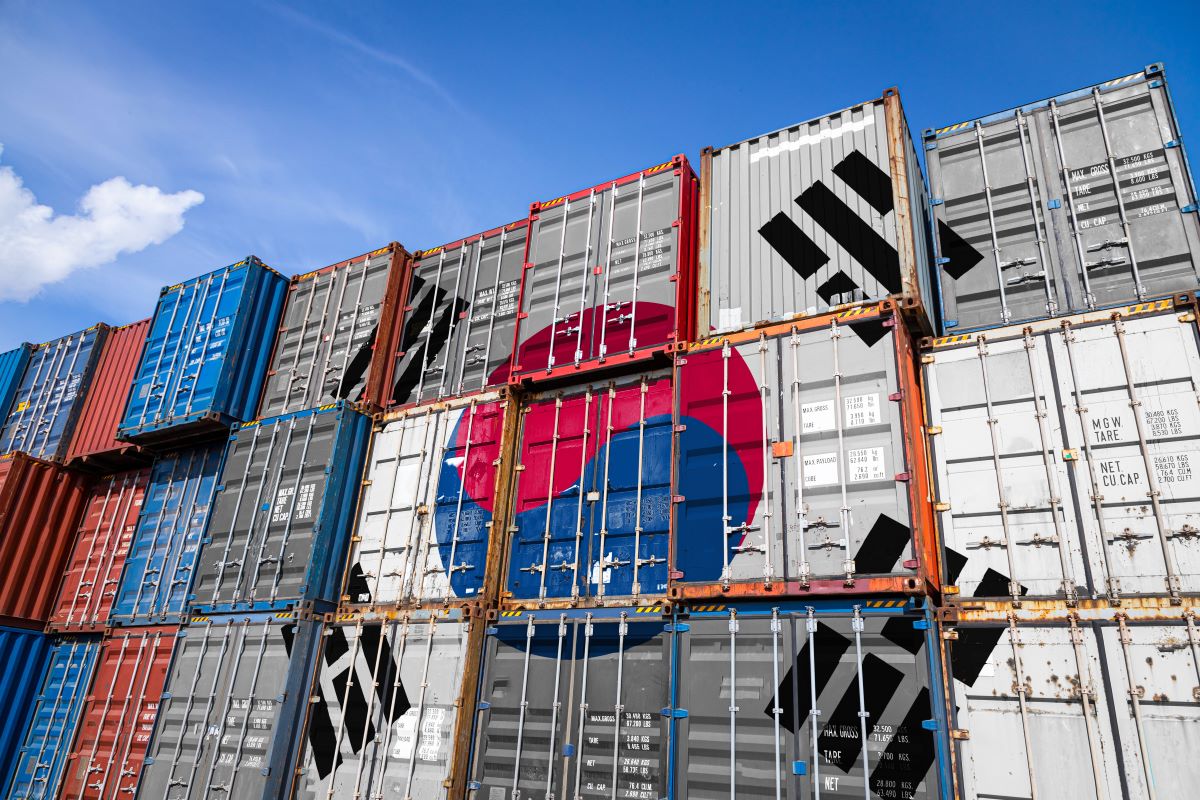The gloom in South Korea’s export sector refuses to die down. The latest trade data reveals that the nation’s exports declined 8.4% year on year to $51.87 bn in August 2023. The slump in exports is primarily due to a drop in overseas sales of semiconductors, as well as petroleum and petrochemical products.
The semiconductor exports dropped 21% over the previous year, apparently due to the slowdown in China, one of the largest markets for South Korea. It is also attributable to the falling unit prices of DRAM and NAND memory chips.
At the same time, the overseas sales for petrochemical products also declined 35% for the same period as routine maintenance in oil refineries led to reduced shipments.
In addition, the decline in South Korean exports is also a result of the high base effect from record-high exports in August 2022.
China continues to be the pain point for South Korean exports
South Korea’s exports to China for the first seven months of 2023 contributed 19.6%, compared to 25% in the same period last year. Experts are worried and consider this as particularly risky for the South Korean economy in the long run.
A research report by the Hyundai Research Institute released in late August, predicts that Korean Exports to China will decline by $37 bn in 2023. This is likely to have a significant impact on the South Korean GDP too. The institute, as quoted by Business Korea, cautioned, “Although the Korean economy is less dependent on the Chinese economy than in the past, the magnitude of the decline’s shock to the Korean economy is not small by any means, as the decline has been at a record high so far this year.”
According to another survey conducted by the Korea Chamber of Commerce and Industry (KCCI), out of 302 South Korean exporters to China, 52.4% admitted that their earnings so far this year have fallen short of the targets they set at the beginning of the year. Weak consumer spending, sluggish industrial production, and the US-China trade conflicts were cited as some of the main reasons by the companies.
Besides China, “weak economic growth in the US and the European Union (EU) remains a key downside risk for South Korea’s manufacturing export sector in the second half of 2023 and into 2024″, cautions S&P Global.
Korean exports decline on weak chip demand
The decline in global chip demand is one of the key factors leading to a drop in South Korean exports. Meanwhile, the US also extended its one-year exemption on export curbs to China for Samsung and SK Hynix.
According to the Peterson Institute for International Economics, South Korean chip firms are particularly vulnerable because 40% of the memory chips for these firms are produced in China. “Korean semiconductor companies will face short-term inefficiencies arising from difficulties in upgrading fabs in China. But we see this development as a long-term positive as Korean companies have started to redesign their existing fab location strategy,” informed Eastspring Investments.
Outlook for South Korean exports
While August saw the eleventh straight month of decline in South Korea’s exports, the pace has slowed when compared to July, which many experts see as a glimmer of hope. Automobiles played a role in slowing the pace of decline with its exports jumping 29% on year in August, led by eco-friendly vehicles and SUVs. Additionally, EVs saw a 66% year-on-year surge. With a 22.8% year-on-year decline in imports, South Korea logged a trade surplus of $870 mn in August.
Early in August, Finance Minister Kyung-Ho Choo asserted “Despite some volatility every month, exports are showing signs of improvement.” He also reiterated the government’s commitment to support export-related sectors. As a part of these efforts, the policymakers plan to lift regulations at bonded warehouses, enabling companies to assemble, repair, and pack products to increase their value. South Korea will also ease regulations for the construction of new bonded warehouses by local firms, it added.
In March, President Suk Yeol Yoon announced a $422 bn investment into key areas such as chips and electric vehicles to boost manufacturing. While announcing the latest export figures, the policymakers also forecasted a gradual improvement in the chip industry to increase demand for high-performing products like DDR5 and HBM memory.
Looking at Korea’s growing importance in the EV supply chain, Goldman Sachs considers battery-making as a game-changer for the nation’s export sector and the economy. It projects Korea’s battery exports to grow 33% annually until 2030. The battery manufacturing would increase Korea’s annual export and import growth rate to 2.5% and 1.4%, respectively, according to estimates by Goldman Sachs.










 Australia
Australia China
China India
India Indonesia
Indonesia Japan
Japan Malaysia
Malaysia Philippines
Philippines Singapore
Singapore South Korea
South Korea Taiwan
Taiwan Thailand
Thailand Vietnam
Vietnam Germany
Germany Hong Kong
Hong Kong USA
USA Switzerland
Switzerland Singapore
Singapore
 United Kingdom
United Kingdom








